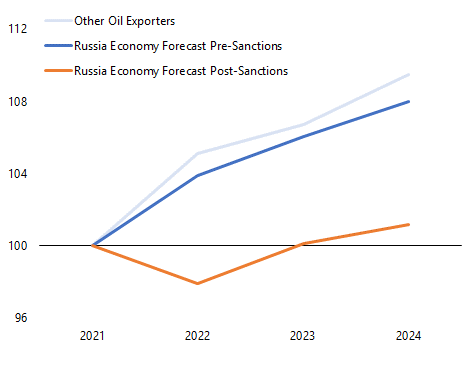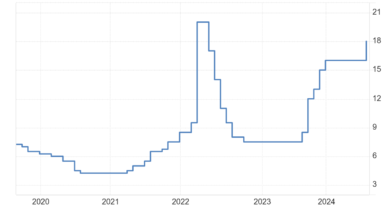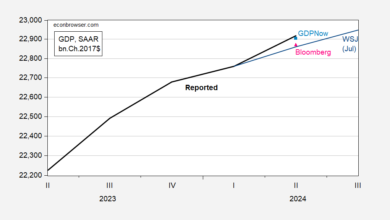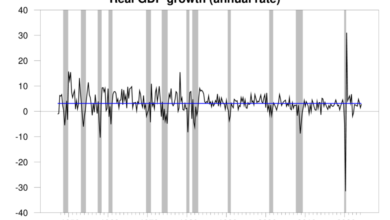
From Treasury’s assessment of the prospects for the Russian economy.
Following its invasion of Ukraine and the imposition of U.S. and partners’ sanctions and other economic measures, Russia’s economy in 2022 contracted by 2.1 percent (Figure 1),[ii] with record-high energy exports cushioning what would have been a far deeper contraction. Russia’s economy is over 5 percent smaller than had been predicted prior to the escalation, and it is far underperforming other energy exporters (including the United States). The war and associated multilateral sanctions are putting Russia’s economy under considerable economic strain, contributing to rapidly growing expenditures, a depreciating ruble, increasing inflation, and a tight labor market reflecting a loss of workers.
Sources: IMF and Treasury staff calculations. Pre-escalation Russian trajectory is the IMF’s 2021 Article IV forecast; the war economy trajectory is the October 2023 IMF WEO. Comparison countries are oil exporters: Brazil, Canada, United States, Saudi Arabia, Mexico, Iraq, the UAE, Norway, and Kuwait.
The graph is based on comparing the pre-war forecast from the IMF and the wartime forecast from October 2023 WEO. While not all of the difference can be attributed to repercussions surrounding Russia’s expanded invasion of Ukraine, that event is the one big macroeconomic development since February 2022.
It’s important to recall that GDP — the sum of all the final expenditures for both civilian and military uses — did not fall much in 2022, and has risen somewhat in 2023 only by virtue of the military component. Bank of Finland’s Heli Simola documents this in a just released working paper on this subject. A key graph:
Source: Simola (2023).
See my assessment of what Russian GDP-ex-military looks like. The Treasury notes that household consumption fell by about 2% in 2022.
Moreover, the fiscal scene is becoming more precarious as the Russian SWF is depleted, and oil revenues decline relative to that experienced in 2022 (see BOFIT September post). In addition, inflation is rising (see also Economist).
Source link






